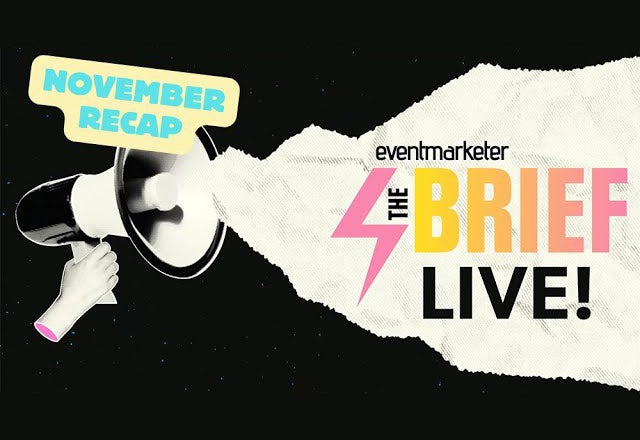 The number of companies offering martech solutions is astonishing, with more than 5,000 companies competing for attention and dollars.
The number of companies offering martech solutions is astonishing, with more than 5,000 companies competing for attention and dollars.
As a conference attendee, purchaser of martech technologies, and avid market watcher, I can tell you this from experience: the process of selecting the right platforms can be extremely complicated. The promises of many vendors sound too good to be true, but the pull of driving additional revenue is so strong that companies can and will jump in without doing their homework.
The trick is not to get sucked into one of the common mistakes even the savviest companies make when choosing martech solutions.
- Falling for the promise of “easy integration.”
Every vendor promises that its solution is easy to integrate with your existing systems, and yet most of the time, “easy” is the last word you’d associate with platform integration. Every company is different, with their own specific needs and priorities, such as increasing customer acquisition, retention, integrating legacy systems and data and too many others to list. These all make integration more complex than it may seem on the surface, and especially more complex than a vendor would have you believe.
It’s not enough to take the vendor’s word for what they can do. Drill down and ask detailed questions: “These are the specific systems that we use, have you done integrations with these types of systems before?” “Have you done integration with our type of company before?” “Have you worked with these types of customer targets?” Also, insist on references. And call them! Even staunch supporters of a solution can provide some intel that may convince you that the solution is not right for your business.
One gotcha: While any given martech solution may be very simple to integrate with an industry-standard platform like Salesforce, it might be a whole different ballgame with your custom code. There are occasionally companies whose technology is easy to integrate, but they’re the exception to the rule. Expect substantial integration work with any solution. If you incur none, you’ll be a rock star for saving on IT resources.
- Buying too many shiny new toys.
It’s a common problem: You go to conferences, watch demos and get excited. Pretty soon you’re trying to integrate five new platforms simultaneously— which works about as well as trying to ride two bicycles at once.
Integration obviously puts a strain on IT resources, but ultimately, it’s a big strain on the marketing team as well. Every additional integration increases workload exponentially.
Marketing in the modern, high-tech era is already complicated enough. If you tell your team that they have to learn five new platforms over the next three months on top of everything else they’re doing, prepare for a revolt.
The right approach is to scale into new technologies. For example, build a roadmap of the platforms you’re considering. Factor in how long it will take to integrate each, and rank them according to priority/need and revenue potential. Start with your number one, get it up and running, train the team on how to use it and see how it works with existing systems, then move on to the next platform from there.
Keep each platform simple at first. Even if the new solution has tons of capabilities and cool bells and whistles, get the basics working—the main goal should be getting your team comfortable using the interface. Then, start integrating more sophisticated features into your workflow.
- Mistaking “bigger” for “better.”
In the days of mainframe computers, there was a saying: Nobody ever got fired for buying IBM.
A lot of companies still have that mindset: We’re only going to buy from the biggest companies and the best-known brand names.
Yes, IBM is still around, and it offers a major martech solution, thanks to its acquisition of Silverpop some years ago. You probably hear the names of other giants in the martech industry every day—Salesforce, Oracle, Marketo, Hubspot, Adobe.
However, these big names offer martech solutions that come with their own problems. For one, they tend to be more expensive than smaller, more focused offerings. Second, since many of these giants got into the martech industry through acquisition, there’s always a question about how well-integrated their suites actually are. Side note: is every solution in their portfolio best-in-class technology? Lastly, many of their main platforms have similar capabilities and interfaces. It’s no coincidence—many of these platforms were developed around the same time, often by developers who moved from competitor to competitor.
It’s worth it to look at alternatives from smaller, younger companies for two reasons: You may get better service because they have a smaller client base, and therefore value every client. You might even be able to find a company with newer, better technology: a more user-friendly dashboard that your team can learn faster, or key features like SMS, social and data integrations baked into the foundation—not added later as afterthoughts.
- Failing to get your internal team aligned.
Finally, you’ve got to have the right people on board to make a decision on any martech platform. And it may not be the same group for each platform—naturally, marketing will be involved, but sometimes you’ll bring in the CTO or CIO, someone from the business side like the CFO, your sales team, customer service, or even others. No matters whose input you are seeking, the critical thing is that these key stakeholders are involved throughout the process.
I’ve heard so many examples of companies that got all excited about a new platform and signed a contract, but didn’t talk to the right people within their own company: as a result, they had to wait months for the tech team to get it in their roadmap, or they had to wait for the sales team to be ready to start using it. Get your team involved and informed, and don’t let that happen to you.
If you get martech right and build the right processes around it, you can see incredible increases in sales effectiveness, lower costs of acquisition, better customer retention, and more. The revenue and increased efficiencies that the right martech solutions can drive is more than worth the effort in finding your ideal solutions—if you can avoid a few common traps.
John Becker is CMO of Investor’s Business Daily.
Related Articles:
John Wiley’s Next Chapter Includes Improved Customer Data
Q&A: Ben Wang on Arizona’ Coyotes Goals for Email
Touchtown Engages Senior Centers With Automation



